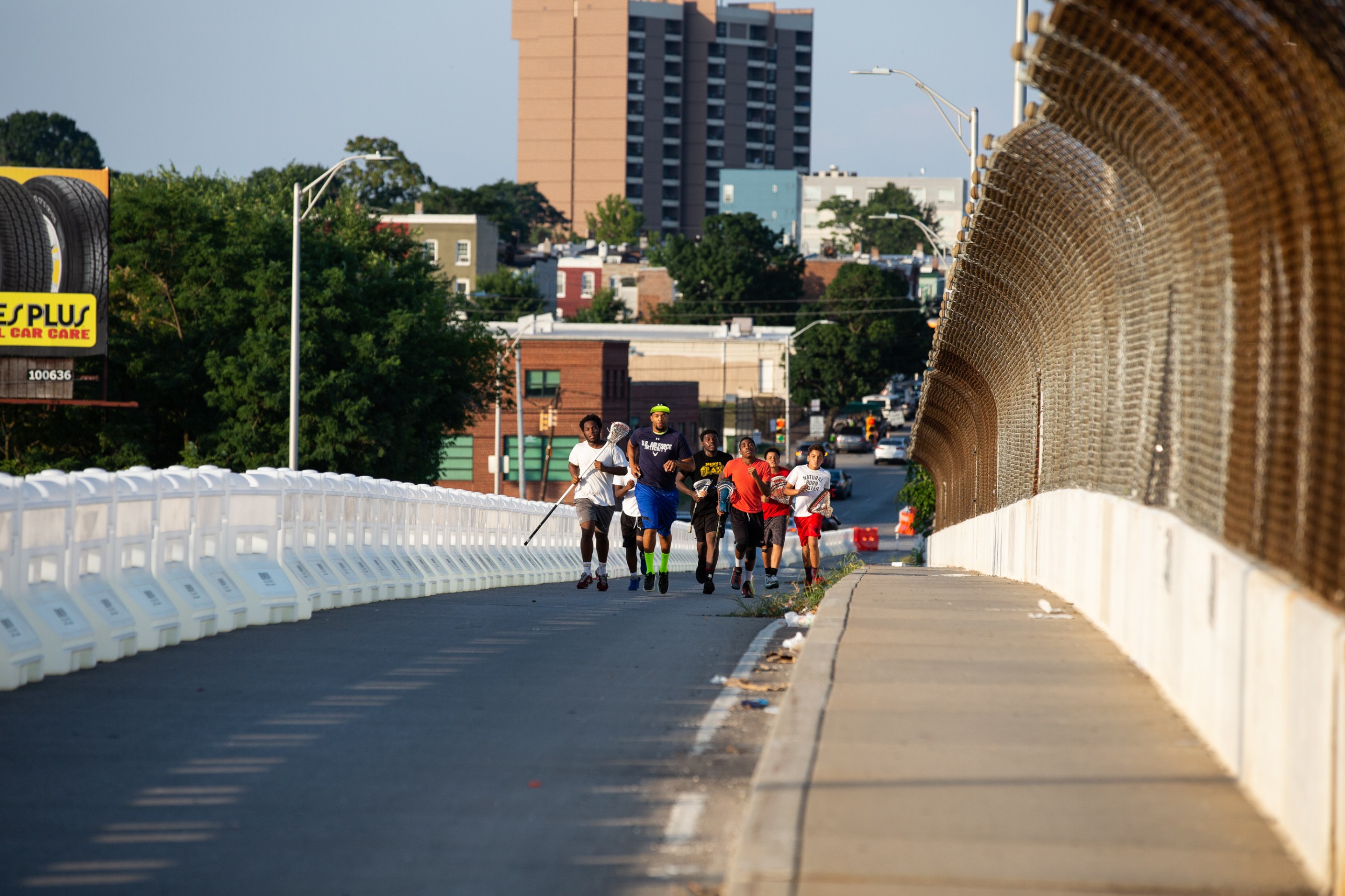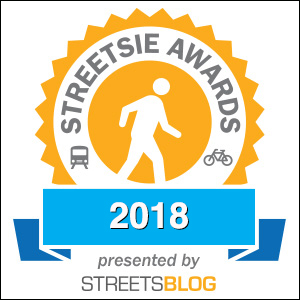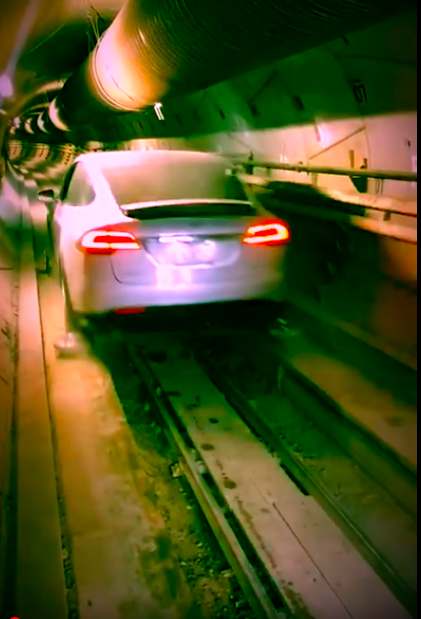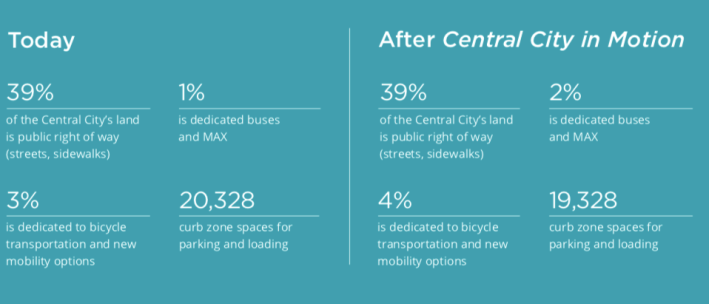Today we kick off our annual "Streetsies" competition, that time of year when where we look back at the year and remember the stories that really had an impact on urban transportation progress.
This year could have been worse. President Trump tried to kill transit funding and failed.
And at the city level, local leaders mostly forged ahead despite the nonsense in Washington.
Here are some of the high- and low-lights. Vote for your favorites:
Happiest Development
Parking minimums going away
In 2018, Minneapolis and San Francisco joined pioneers Buffalo and Hartford in axing parking minimums. Everyone's ditching these outdated, but ubiquitous zoning rules, that force developers to spend a lot of money subsidizing car storage at the expense of walkability and housing affordability. Hopefully 2018 is just the beginning of this trend.
Congestion pricing talk heats up
Nobody's actually doing congestion pricing in the U.S. — yet. But in 2018, important leaders got a lot more serious about it. New York City, City Council Speaker Corey Johnson just today said, may charge ahead with congestion pricing, growing tired of waiting for state approval. In Seattle, Mayor Jenny Durkan has been studying it. Portland hopes to introduce congestion pricing — or variable tolling — on two highways. San Francisco is also been looking at it seriously. The topic has even come up among some important players in Los Angeles.
Will 2019 be the year we actually see this happen?
Worst Villain
SUVs
In 2018, SUVs continued to crush sedans in the auto market, even leading to some mass layoffs at auto factories in the Midwest. This trend was all the more concerning as consensus started to emerge in 2018 that the rise of SUVs was a likely cause of the mysterious increase in traffic deaths the U.S. has seen over the last half decade. They are especially deadly for pedestrians -- between two and three times as likely to kill the walkers they strike as regular cars. Oof.
Uber
Where to start? More and more data confirmed in 2018 that ride-hailing apps — primarily Uber and Lyft — were causing all sort of problems. Increasing congestion in congested cities. Reducing transit use. Even increasing traffic deaths and vehicle registrations.
To top it off, Uber caused the death of a woman walking a bike in Tempe Arizona in the spring rushing its not-ready-for-prime-time self-driving cars to market.
Elon Musk
Elon Musk won the Streetsies Award for Biggest Villain last year. So normally we would exclude him. But Elon Musk had such an interesting year in 2018 as well, we just can't.
Musk spent the year secretly drilling under the city of Hawthorne, California, only to unveil very late in the year a one-mile tunnel just wide enough to fit one Tesla. Though he claimed the tunnels would eventually rocket drivers across L.A. at 130 miles per hour, the demo only reached 50 miles per hour and the handling was bumpy. Musk sheepishly told the L.A. Times "We kind of ran out of time." Beyond the technical issues, the whole concept is almost comically flawed. Musk's tiny car tunnel takes all the expense of building a subway and couples it with the clunky low throughput of cars.
Koch Brothers
The billionaire Koch brothers — Charles and David — continued attacking local transit projects through their shadowy political network. Through their political advocacy group, Americans for Prosperity, Koch money helped defeat a $5-billion transit expansion plan in Nashville. Then they moved on to attacking a recently passed $230-billion transit measure in Phoenix. Fortunately, in the latter case they were unsuccessful in a last-minute attempt to kill a nearly shovel ready light rail expansion project — South Central Light Rail — aimed at benefitting low-income neighborhoods. They also tried, and failed, to stop Tampa voters from approving a spending package aimed at shoring up the region's miserable transit service. Nevertheless, opponents — with or without support — are now attempting to attack the approved law at in the courts.
Note: We're going to name some heroes, too, but you don't get to vote on that. Sorry! Stay tuned! (But if you have some suggestions feel free to pass along in the comments or by emailing me here.)
Best New Transportation Plan
Minneapolis
With its Minneapolis 2040 plan, the city eliminated parking minimums and banned new gas stations. Led by City Council President Lisa Bender, with support of activists at Neighbors for More Neighbors, the plan aimed to reduce emissions 80 percent by 2050. Oh, and the plan did away with a little thing called single-family zoning, which means the whole city will be more densely populated and thus more walkable — and less segregated by income, hopefully, as well.
Portland
Portland's Central City in Motion plans propose repurposing 2 percent of downtown street space and for bikes and buses. One of the most exciting elements: The plan includes the removal of 1,000 parking spaces. Central City in Motion proposes $72 million to carry out 18 projects major street projects, each of which adds a bike or bus lane or both. By prioritizing more efficient modes of transit, the city hopes those projects increase the carrying capacity of the streets by 60 percent -- enough to add 40 percent more jobs and 130 percent more residents by 2040 without an increase in congestion.
Detroit
Detroit's new five-year transportation plan is pretty inspired as well. It calls for boosting transit ridership 25 percent, with increased service frequency on the city's 10 most busy bus routes as well as features like off-board boarding. The plan does a good job incorporating equity concerns. For example, it calls for adding 50 news bus shelters and special bike patrols by police to help bus riders feel safe along important transit routes at night. Detroit residents have suffered from policies that prioritized suburban commuters. But Detroit's plan should help right some of those injustices.
Best Pop-Up Demonstration
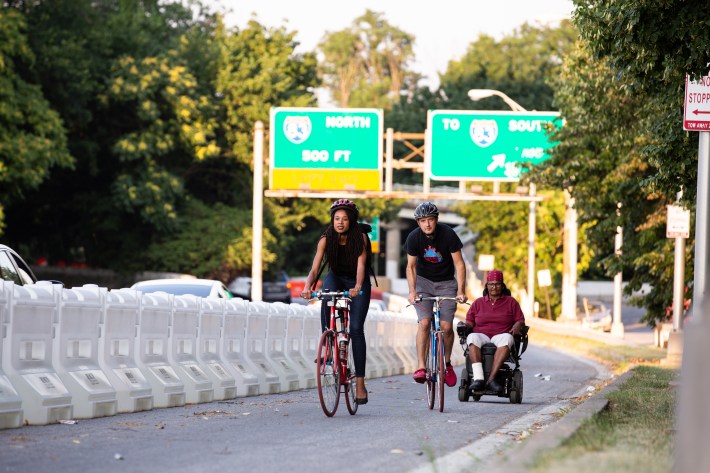
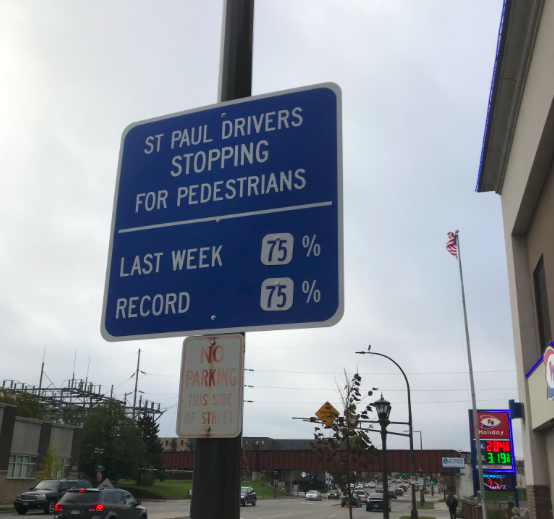
St. Paul used signs (right) to help encourage people to yield to pedestrians during an experiment led by University of Minnesota researcher Nicole Morris. The signs are intended to evoke social pressure for drivers to obey yielding laws. The concept comes from the field of "human factors psychology," which Morris is trying to use to promote safe driving behavior.
With that, we'll give you guys until Dec. 28 to vote. Reminder, we are still seeking nominations for our grand prize: Best Urban Street Redesign of 2018.
Hope you have a great holiday season (if you're not having one, click here) and we'll see you next week!
